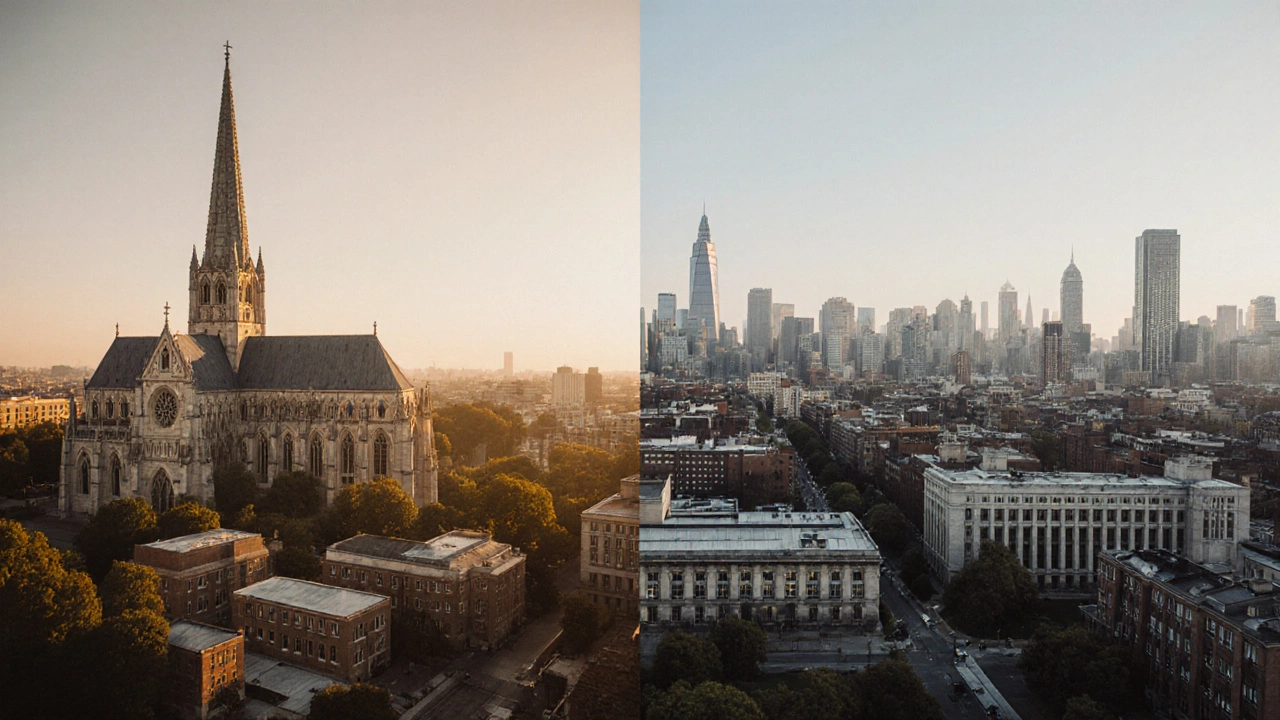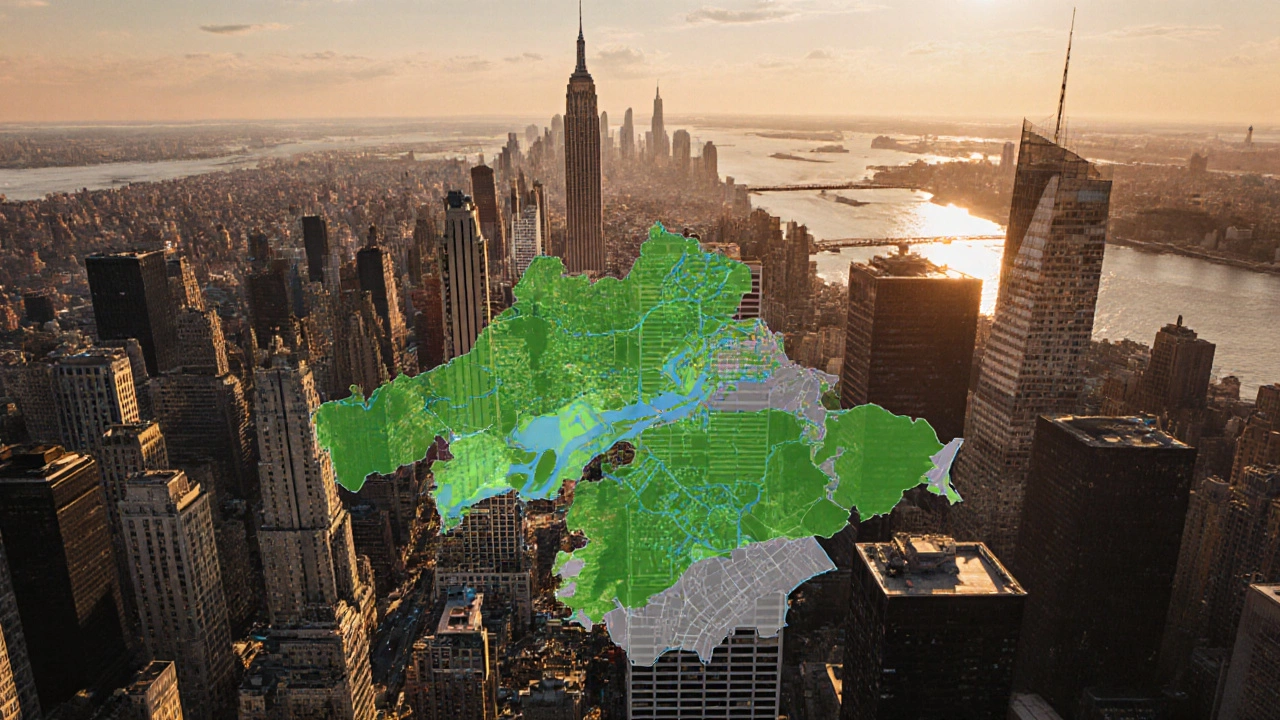NYC Land Ownership Calculator
Calculate NYC land acreage from square footage and compare with the city's largest landowners. The tool uses the standard conversion: 1 acre = 43,560 square feet.
When you hear "biggest landowner" you might picture a billionaire’s private estate, but in New York City the answer is far less glamorous. The largest landowner in NYC is actually the municipal government itself, holding more than half a million acres across the five boroughs. Below we break down how that figure is calculated, who the top private players are, and how you can verify these numbers using the city’s property registration tools.
Why the City Owns So Much Land
New York City’s land portfolio grew out of a mix of historic acquisitions, public projects, and strategic holds. Early 20th‑century slum‑clearance, waterfront renewal, and the construction of public schools, parks, and hospitals added parcels to the city’s ledger. Today, agencies like the Department of Citywide Administrative Services (DCAS) manage a massive inventory of properties used for everything from office space to vacant lots awaiting development.
How We Measure Landholdings
Land ownership in NYC is recorded in the Automated City Register Information System (ACRIS). Every deed, mortgage, and conveyance is entered with a unique borough‑block‑lot (BBL) number, which lets analysts aggregate total acreage. By pulling the latest 2024‑2025 ACRIS export and summing the parcel areas (in square feet), we get a reliable picture of who holds the most ground.
Top Public Landowner: The City of New York
The city’s holdings span roughly 640,000 acres (about 28 % of the total land area). Major categories include:
- Public parks - Central Park, Prospect Park, and dozens of neighborhood green spaces
- Transportation corridors - streets, bridges, and the Metropolitan Transportation Authority (MTA) rights‑of‑way
- Government buildings - City Hall, courthouses, and agency offices
- Educational sites - public school campuses and community colleges
These parcels are maintained by various city departments, but they all roll up to the municipal balance sheet, making the City the undisputed leader.

Who Comes in Second? Private Landowners
When you strip away public ownership, the playing field changes. The three biggest private entities in 2025 are:
- Archdiocese of New York - around 59,000 acres, mostly churches, schools, and health facilities.
- Columbia University - approximately 36,000 acres across Manhattan and Manhattanville, including its main campus, research farms, and recent Manhattanville expansion.
- New York University (NYU) - about 22,000 acres, primarily Brooklyn and Manhattan properties, plus several owned student housing complexes.
These institutions have built up holdings over decades through donations, purchases, and strategic land‑banking to secure future growth.
Comparison Table: Public vs. Private Giants
| Owner | Type | Approx. Acres | Key Holdings |
|---|---|---|---|
| City of New York | Public | 640,000 | Parks, streets, MTA rights‑of‑way, schools |
| Archdiocese of New York | Private (non‑profit) | 59,000 | Churches, schools, hospitals |
| Columbia University | Private (education) | 36,000 | Main campus, Manhattanville expansion, research farms |
| NYU | Private (education) | 22,000 | Manhattan campus, Brooklyn housing, real‑estate holdings |
How to Verify Landowner Data Using NYC Records
If you want to check these numbers yourself, follow these steps:
- Visit the NYC Automated City Register (ACRIS) portal.
- Create a free account - it takes less than two minutes.
- Navigate to the “Document Search” tab and select “Deed” as the document type.
- Enter the owner’s name (e.g., "CITY OF NEW YORK" or "ARCHDIOCESE OF NEW YORK") in the “Grantor/Grantee” field.
- Set the date range to cover the most recent fiscal year (2024‑2025) for up‑to‑date figures.
- Download the CSV export. The file includes BBL numbers and parcel area (in square feet).
- Convert square feet to acres (1 acre = 43,560 sq ft) using a simple spreadsheet formula.
- Sum the acres column to get the total holding for that owner.
The same process works for any private entity, allowing you to build your own rankings.

Why Knowing the Largest Landowner Matters
Understanding who controls the majority of NYC’s land informs everything from real‑estate investment strategy to community advocacy. Public land can be earmarked for affordable housing, park improvements, or infrastructure upgrades, while private holdings often signal future development projects. For developers, tracking large institutional owners helps spot potential partnership or acquisition opportunities.
Common Pitfalls and How to Avoid Them
- Ignoring multiple spellings: The city’s official name appears as "CITY OF NEW YORK," "NYC," or simply "New York City" in records. Search all variants.
- Overlooking subsidiaries: Agencies like the MTA or the NYC Housing Authority hold land under separate legal entities. Include them when tallying public ownership.
- Counting leased land twice: Some parcels are owned by the city but leased to private operators. The lease agreement will appear as a separate document-don’t double‑count the square footage.
- Out‑of‑date data: Property transactions happen daily. Stick to the most recent fiscal year to avoid stale numbers.
Future Trends: Who Might Overtake the City?
While it’s unlikely a private entity will ever surpass the municipal portfolio, shifts are possible. The city has pledged to sell underutilized parcels to fund affordable housing, potentially reducing its net acreage. Meanwhile, large non‑profits are increasing their land banks to protect space for community services. Keep an eye on annual ACRIS releases to spot any major changes.
What is the total acreage owned by the City of New York?
The City of New York holds roughly 640,000 acres, covering parks, streets, public buildings, and transportation rights‑of‑way.
Which private organization owns the most land in NYC?
The Archdiocese of New York is the largest private landowner, with about 59,000 acres across churches, schools, and health facilities.
How can I access NYC property records?
Use the NYC Automated City Register (ACRIS) portal. Create a free account, search by owner name, and download the CSV export to calculate acreage.
Do public agencies like the MTA own land separately from the city?
Yes. The MTA holds its own parcels-mainly rail corridors and stations-recorded under the agency’s legal name, but they are still part of the overall public land portfolio.
Why does land ownership matter for average New Yorkers?
Land ownership determines who makes decisions about development, park maintenance, and affordable housing. Knowing the owners helps citizens engage in planning debates and hold officials accountable.
